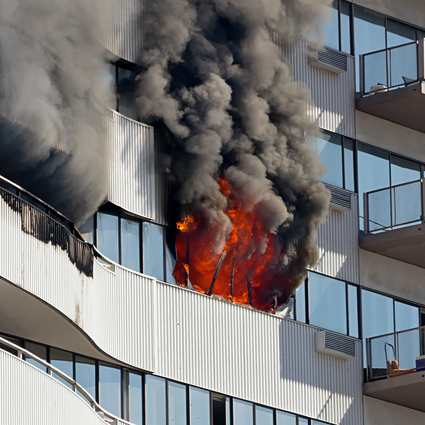
Fire Protection of Building Structures with Intumescent Coatings
When exposed to fire, building materials lose integrity. Concrete can spall and crack exposing rebar, which can lead to structural failure. Wood is easily charred and will quickly loose structural integrity. Steel will start to lose strength at 400 °C.
There are two main methods of fire protection, active and passive. Active protection systems are typically sprinklers and alarms, while passive fire protection (PFP) systems perform without an external trigger.
PFP enables owners to protect the strength of steelwork and slow the spread of fire, increasing the length of time for escape. Most PFP systems require minimal operation maintenance and last the lifetime of the structure. One category of PFP is called an intumescent coating. When these coatings are exposed to fire, the coating increases in volume (intumesces) up to 50 times its original size producing an insulative layer, reducing the heat transfer to what it is covering.
Fire protection of buildings using intumescent coatings is a critical and growing market. According to a report by Grand View Research, the market will reach $1.31 billion by 2025. Over the next couple of months, we will discuss this important market with respect to size, profitability, available technology, and innovation trends.
